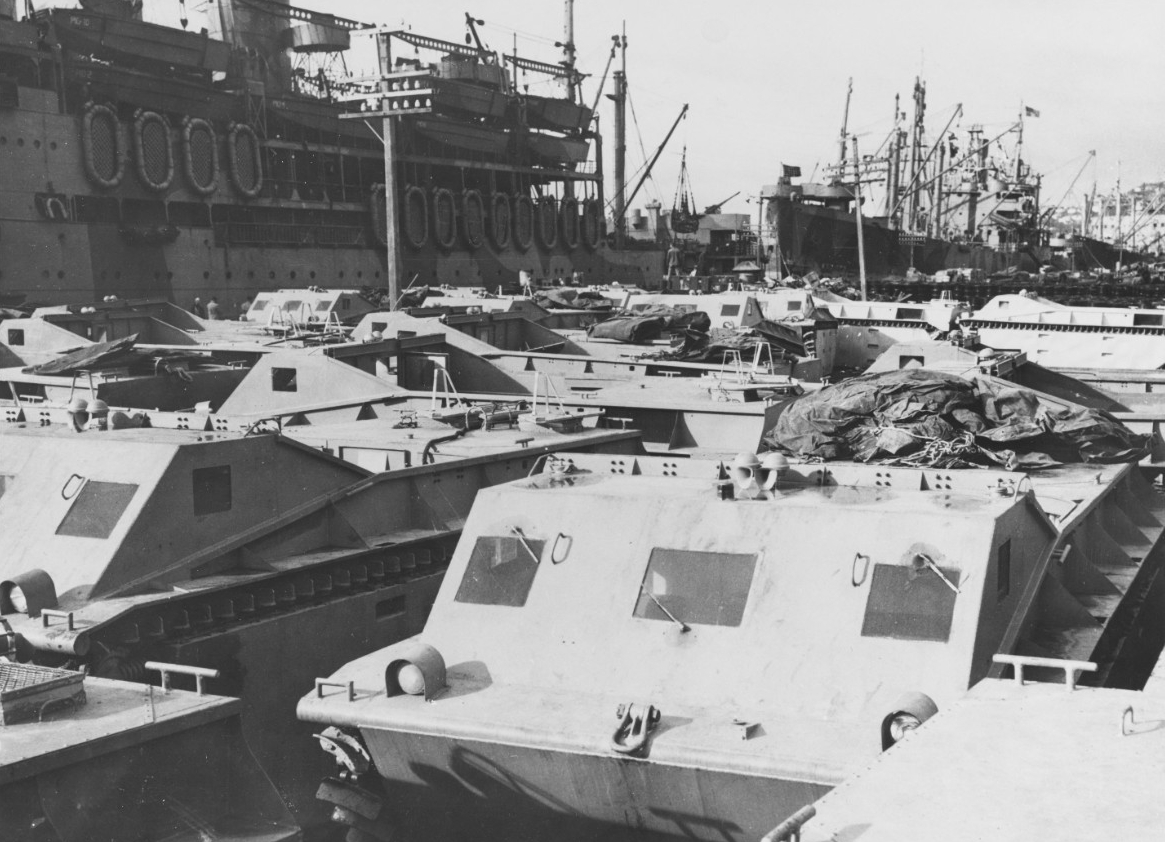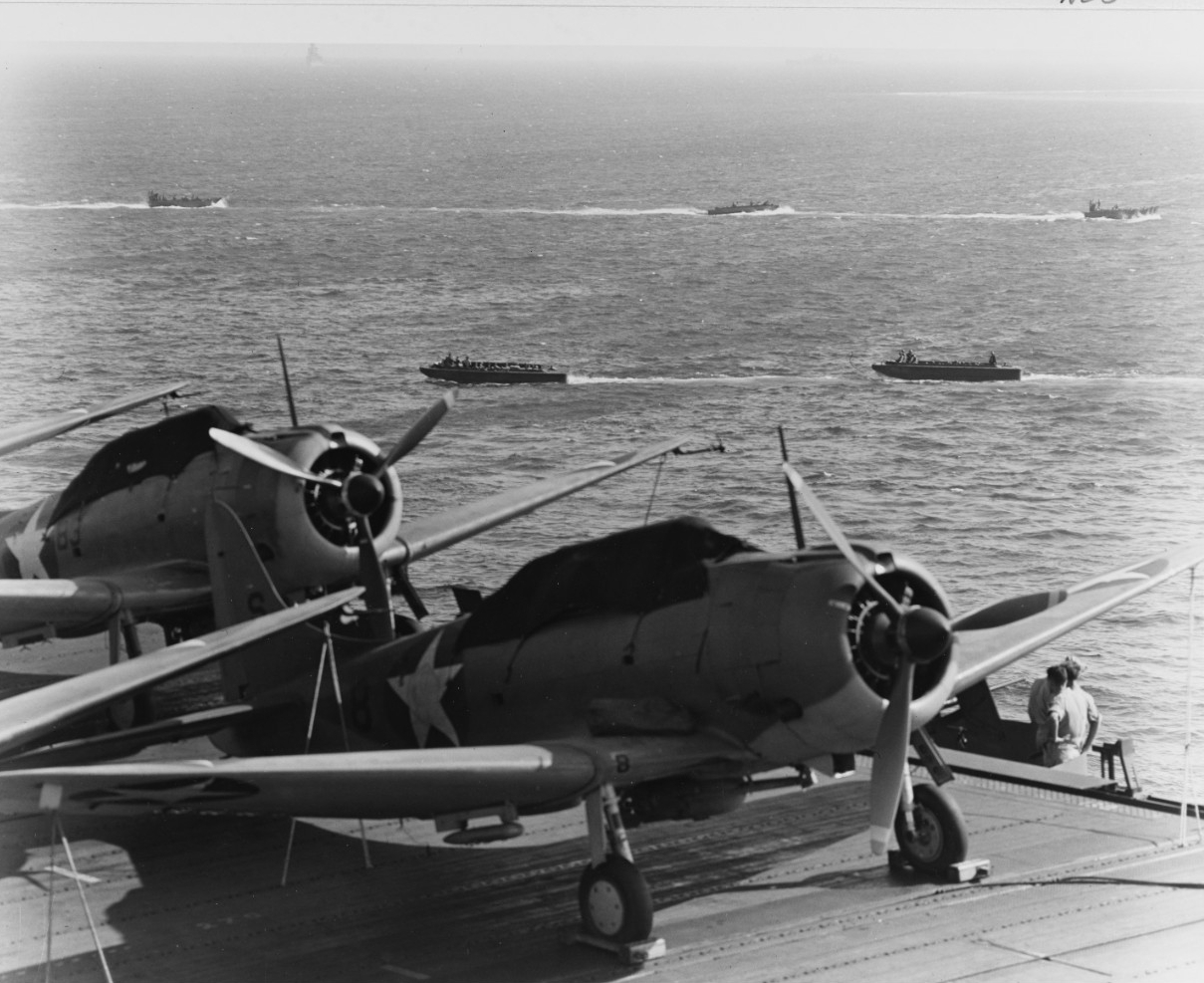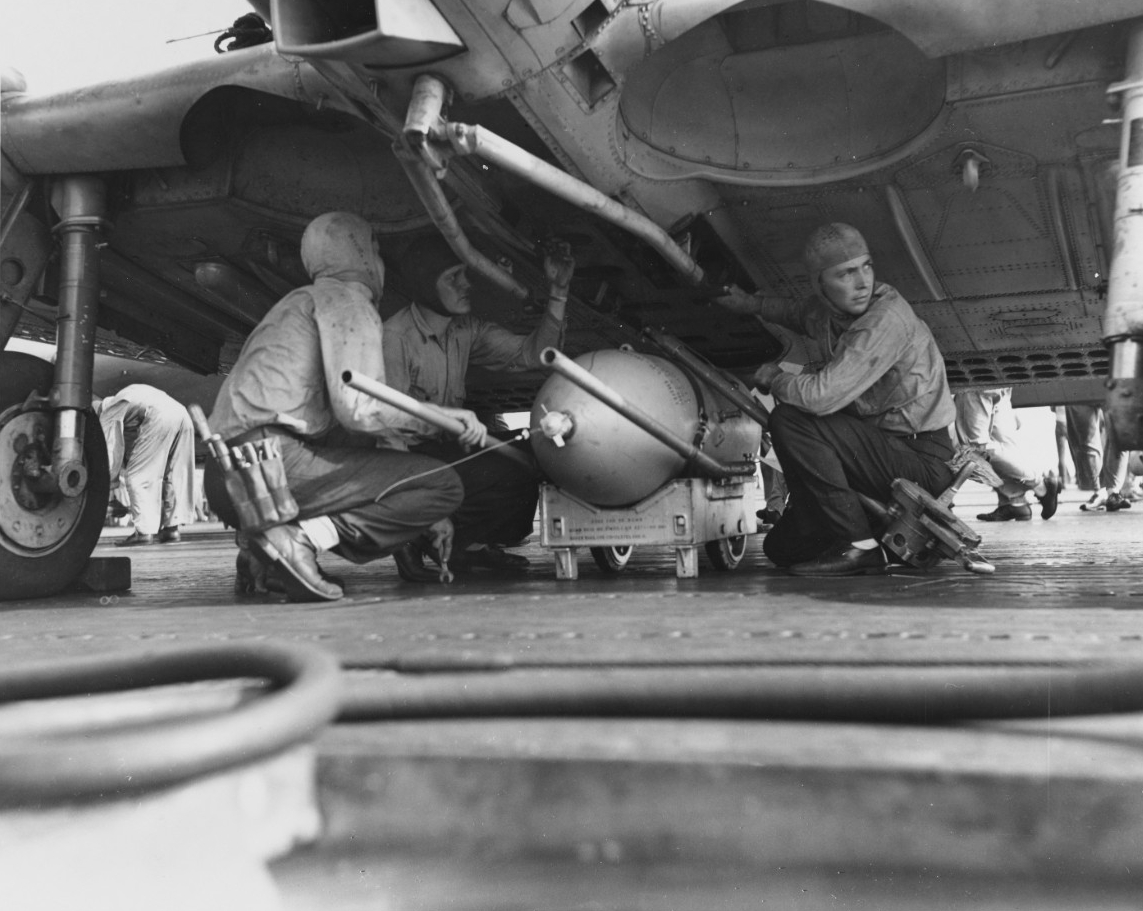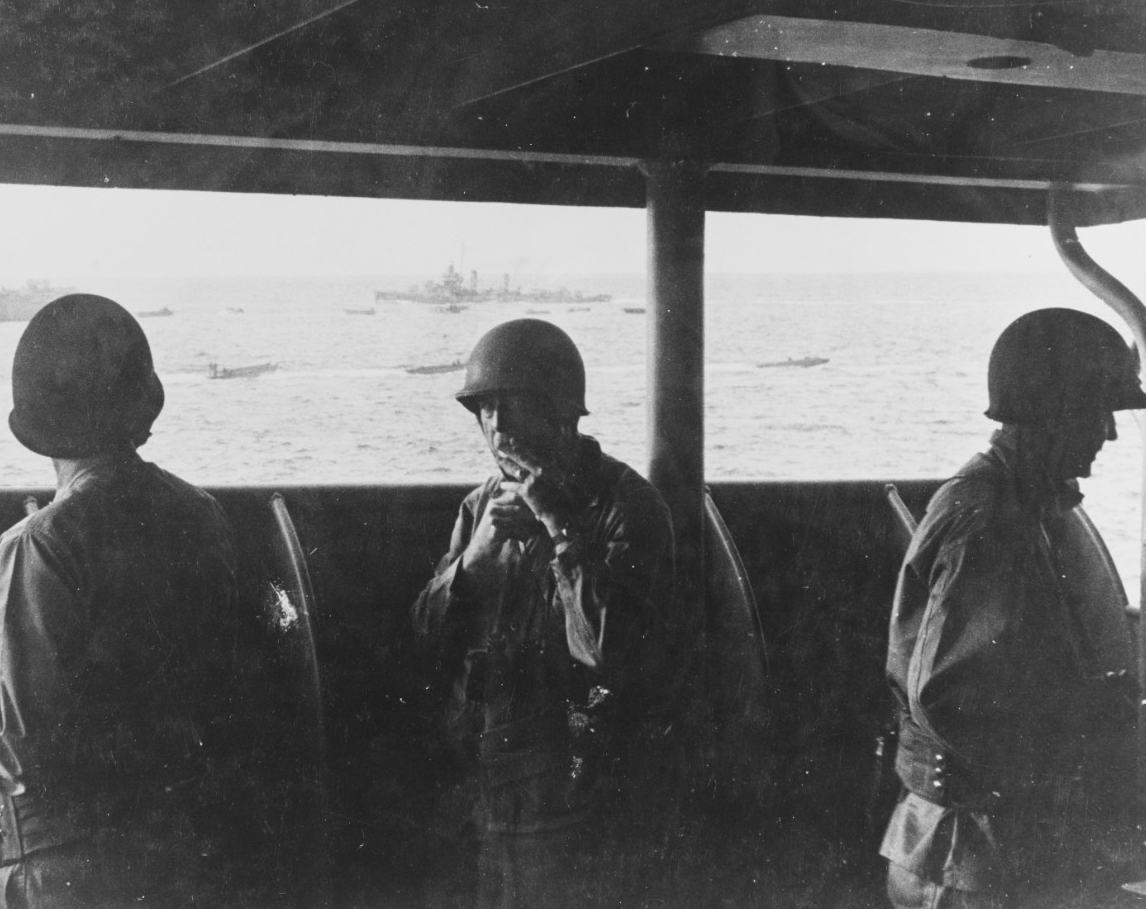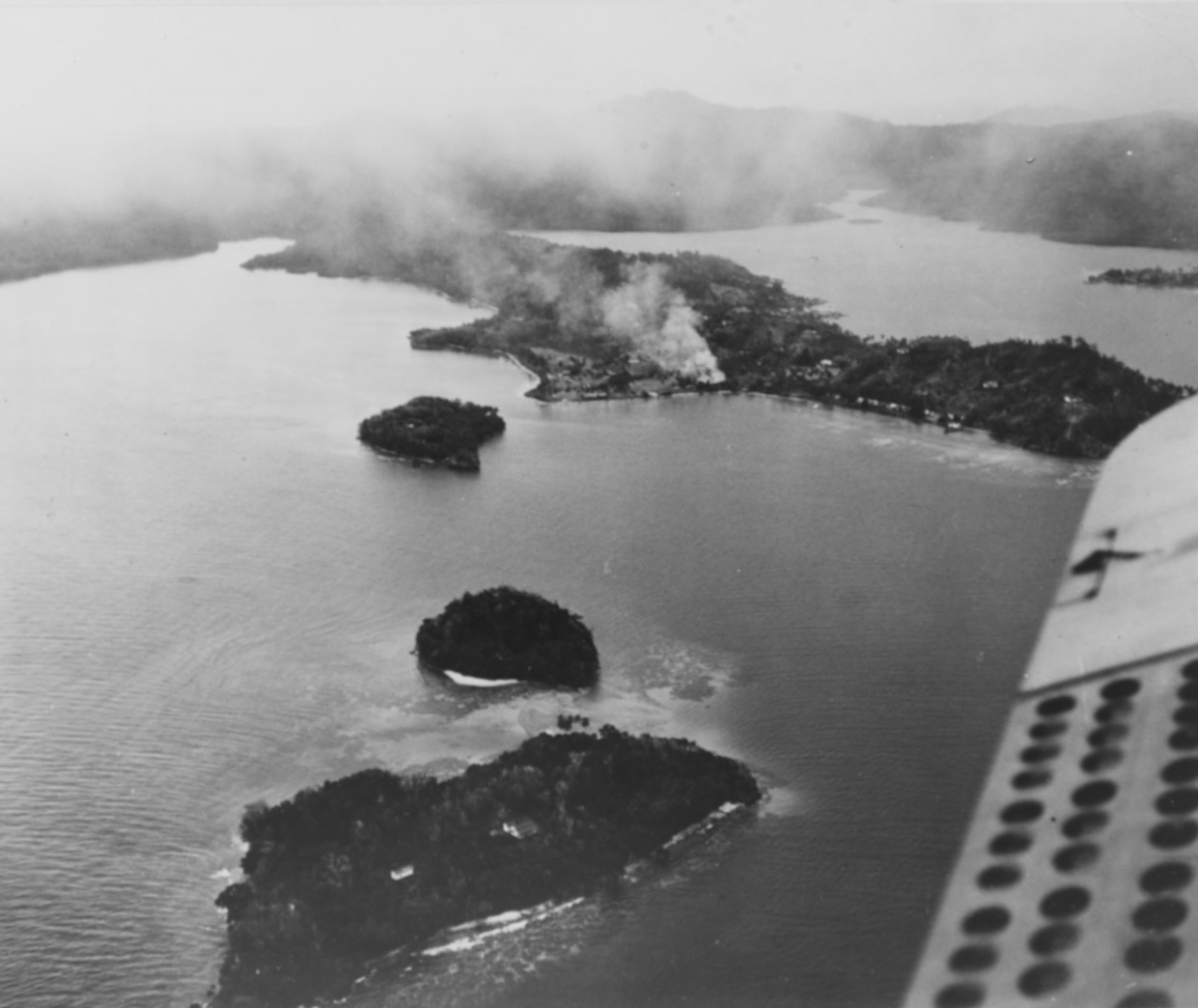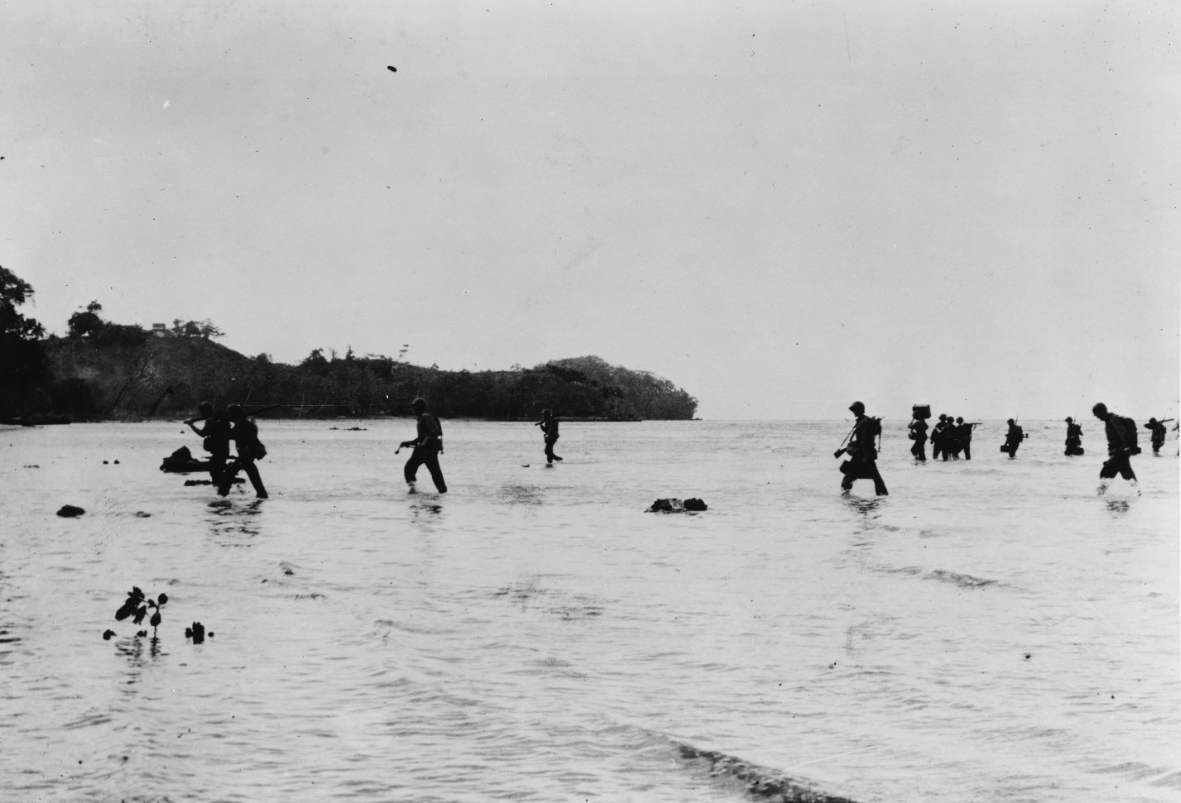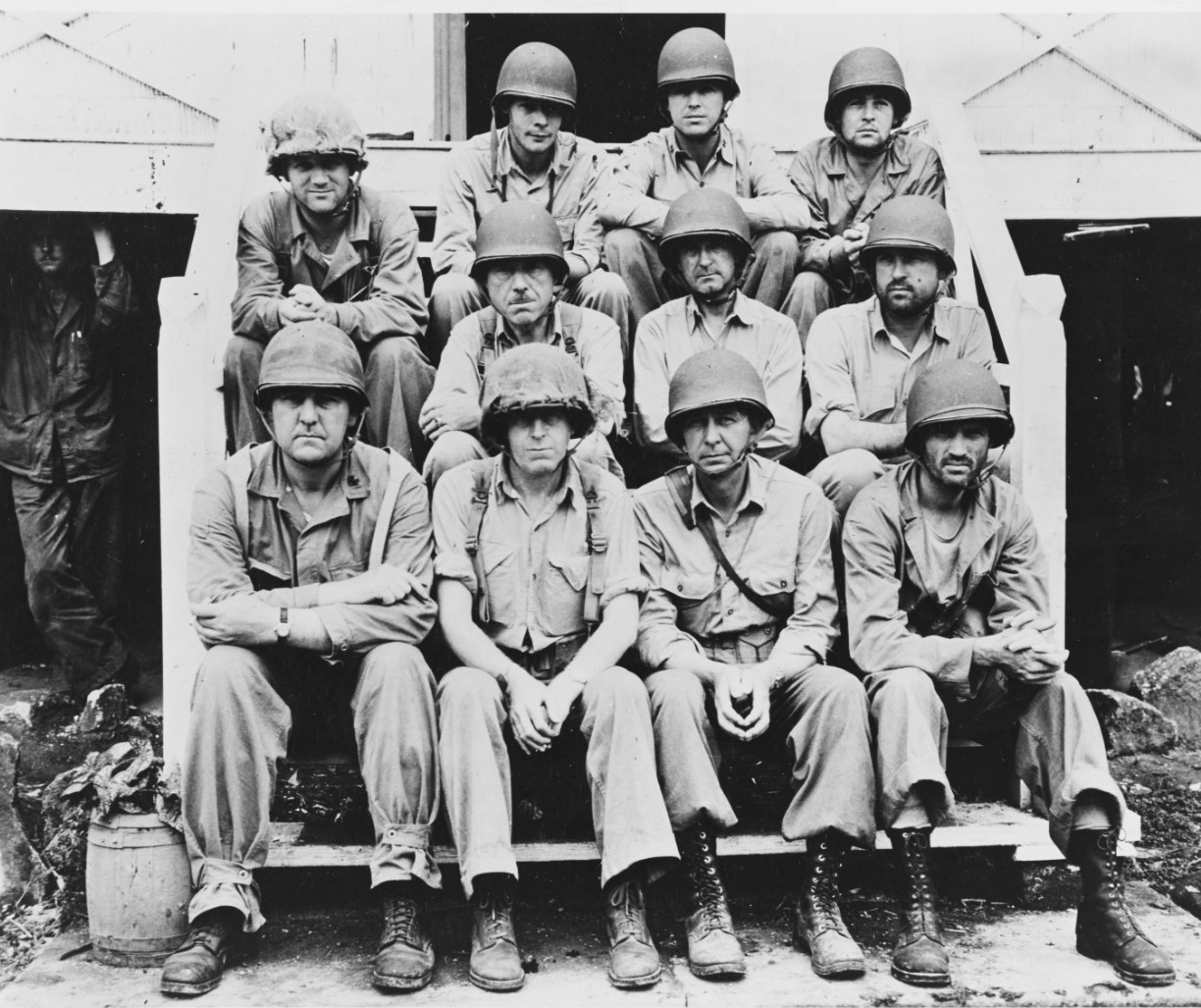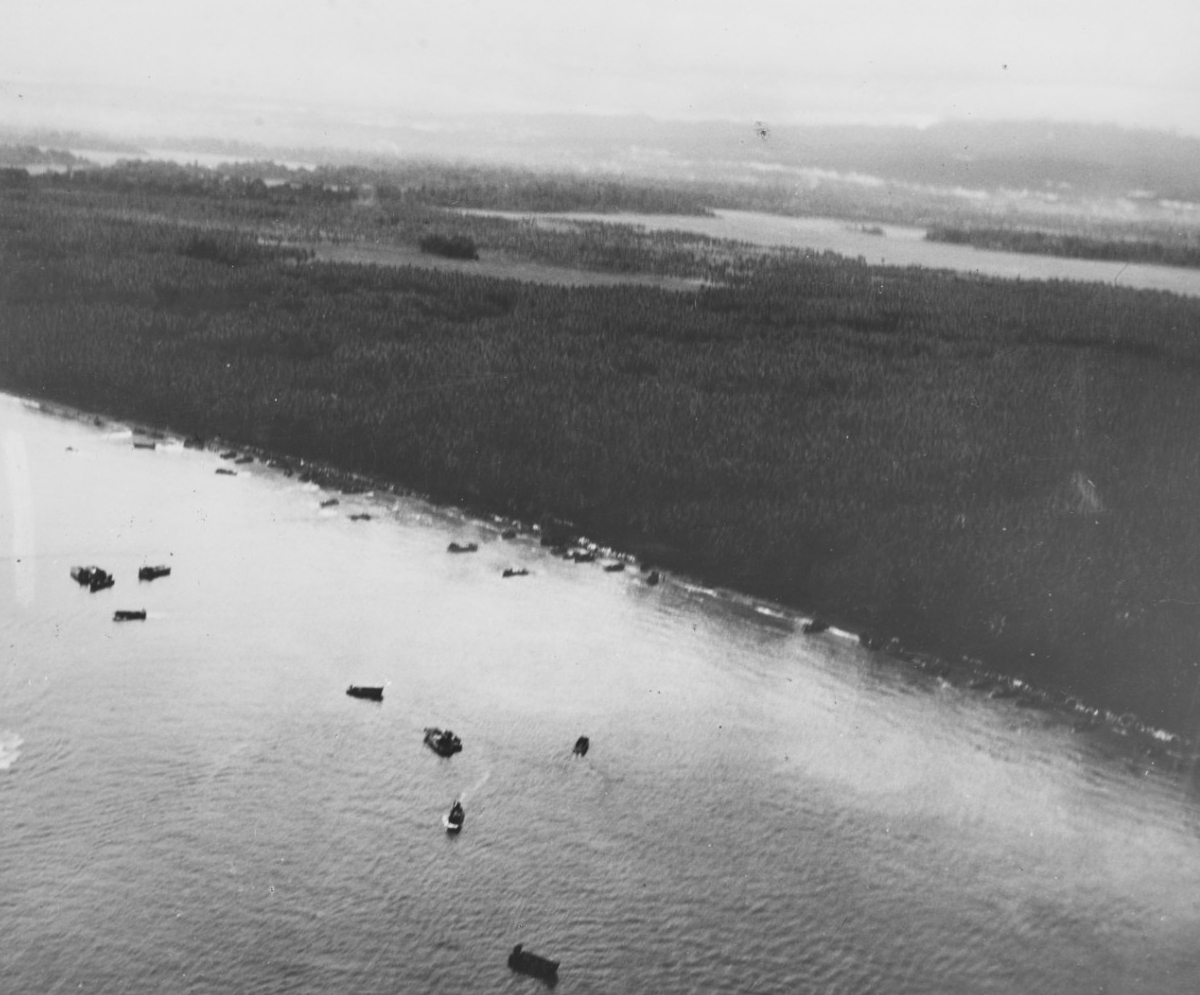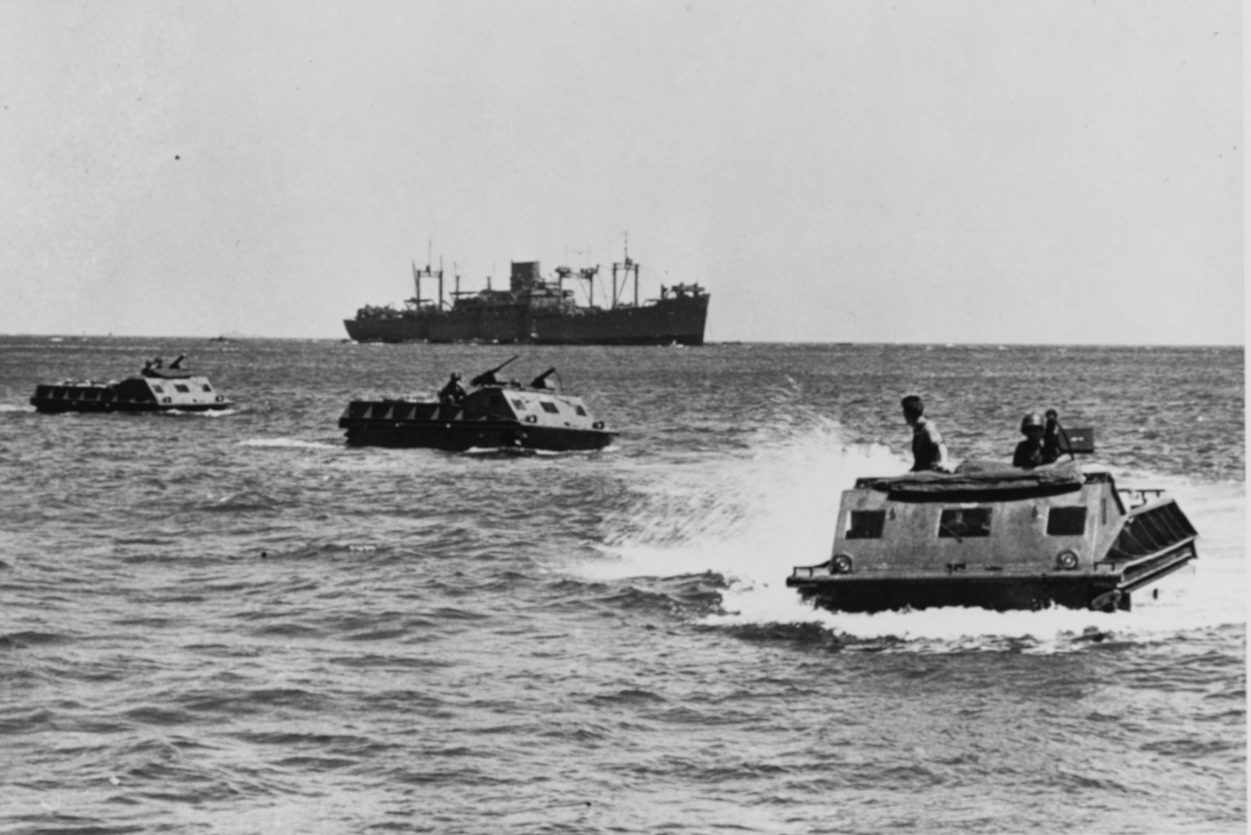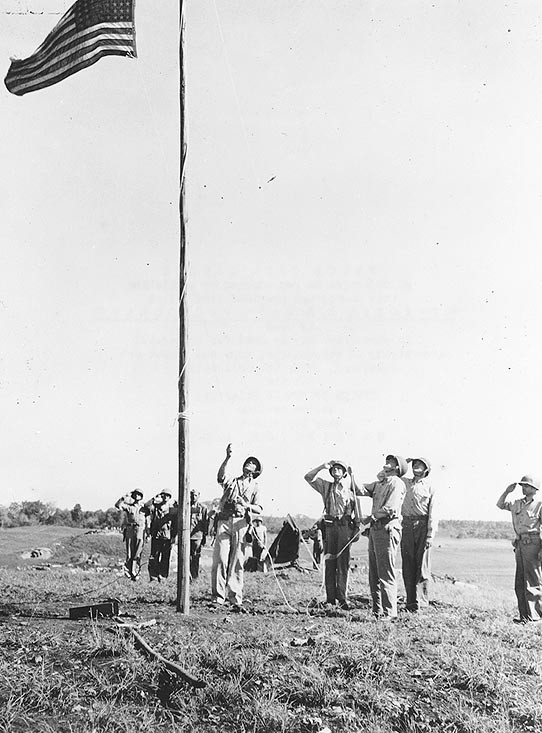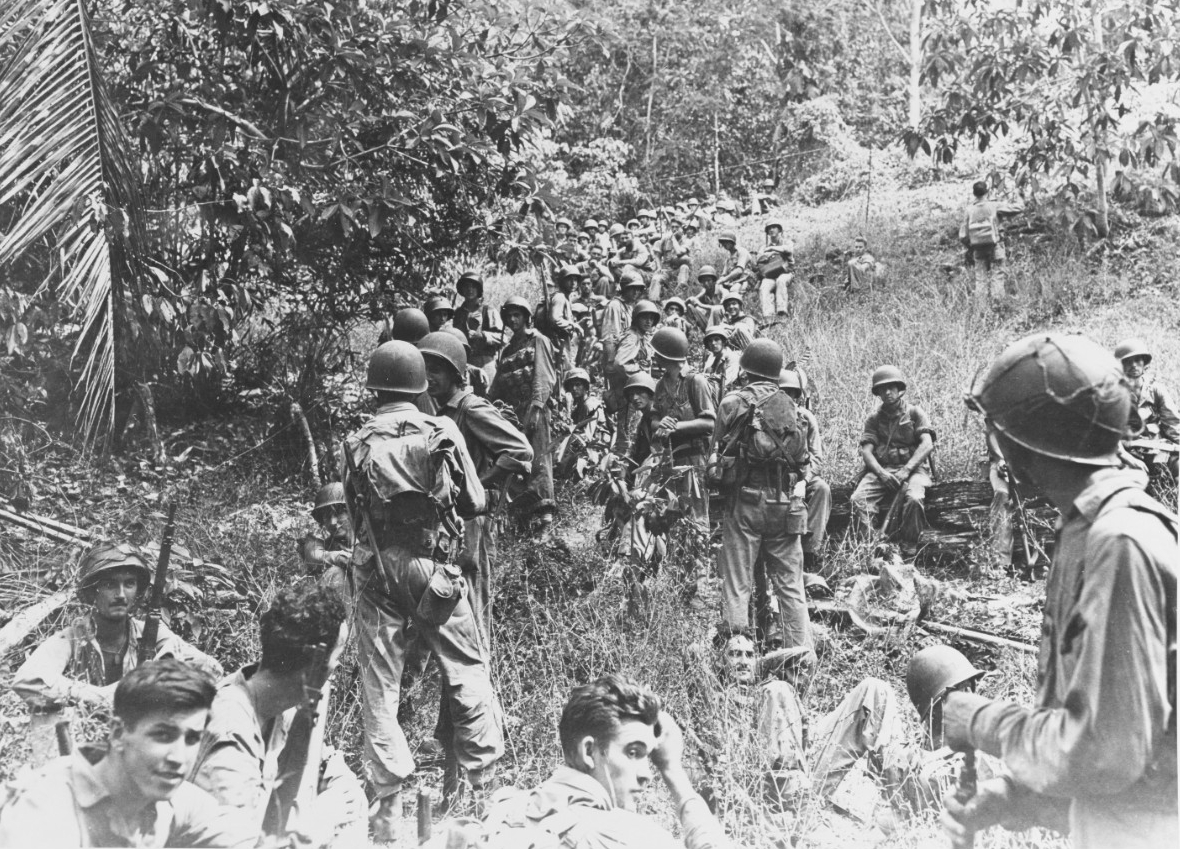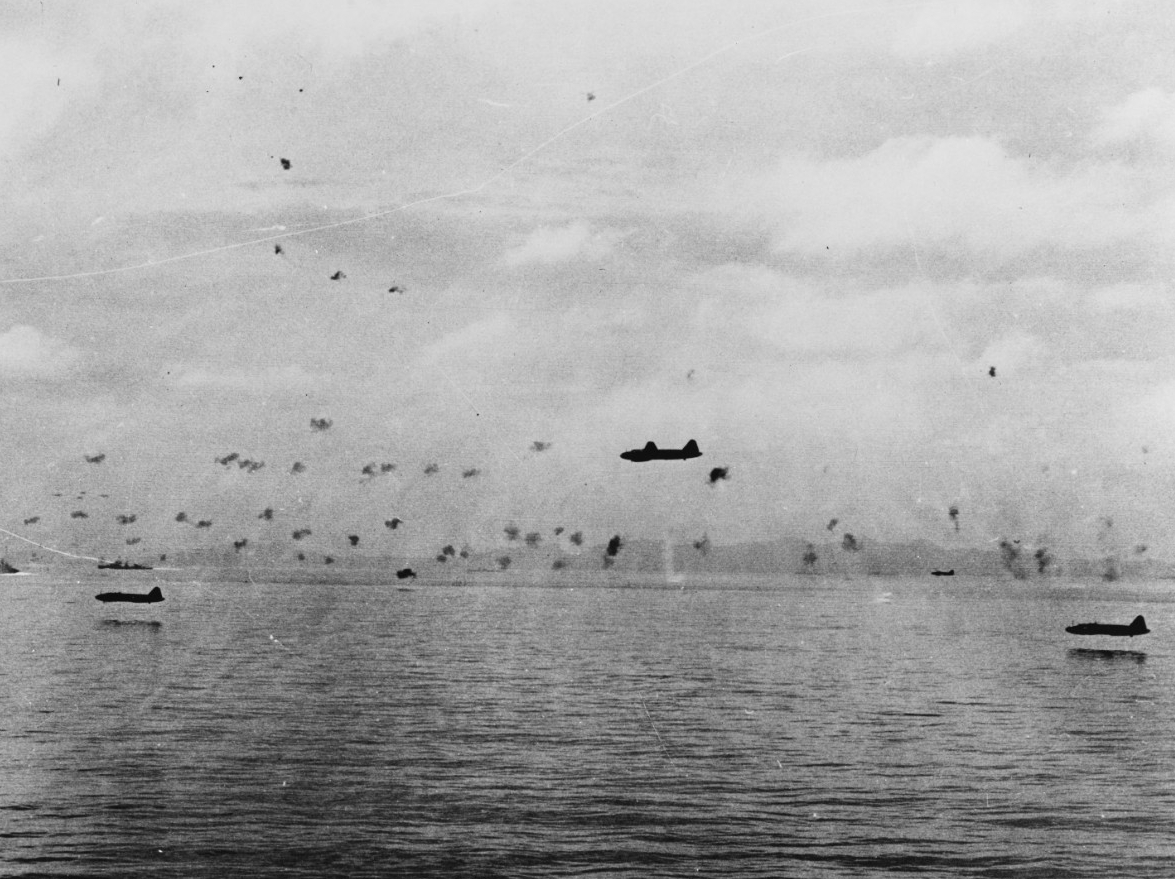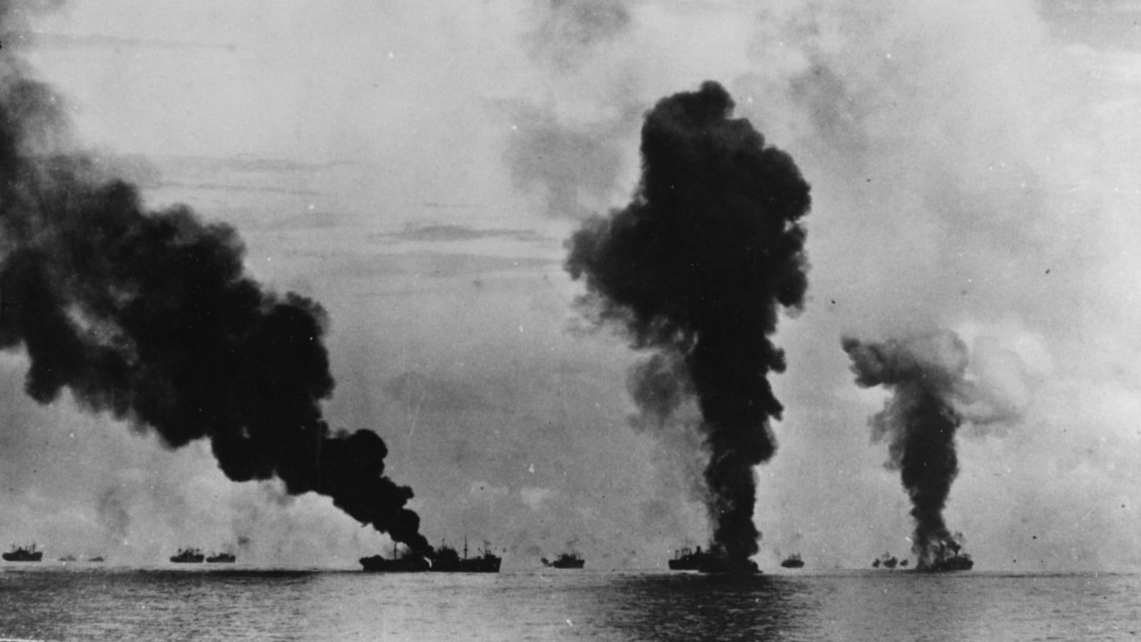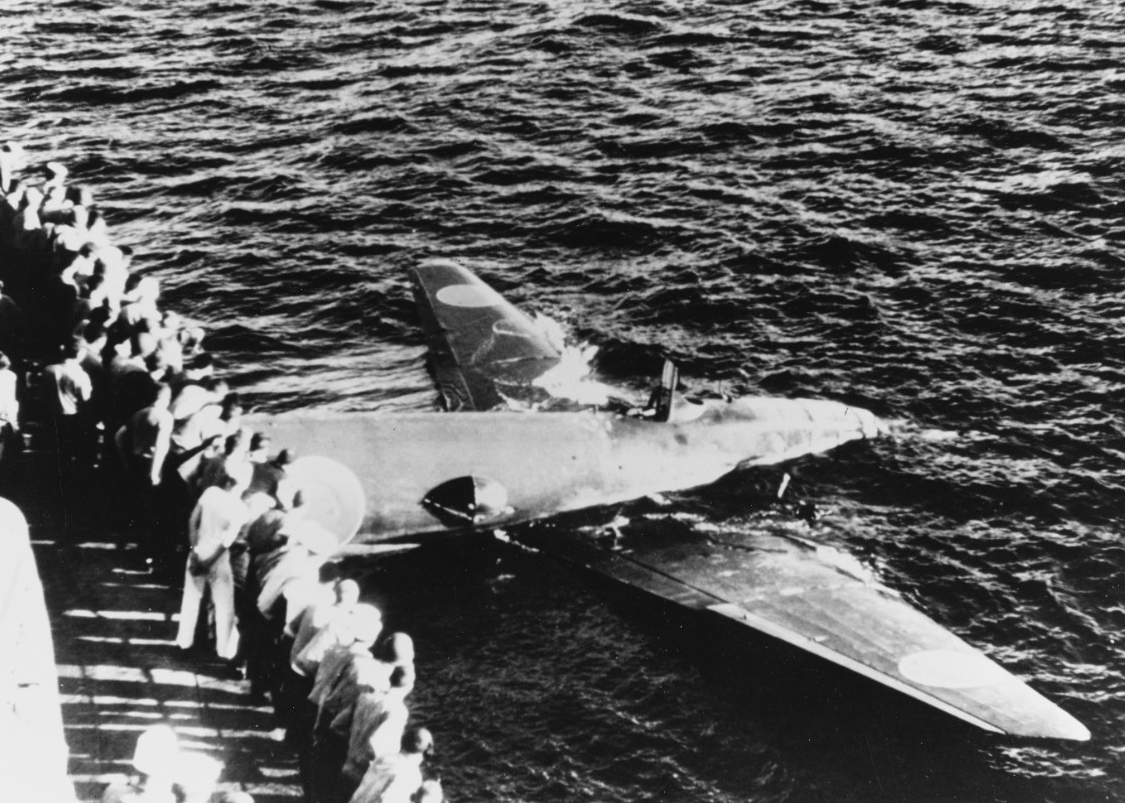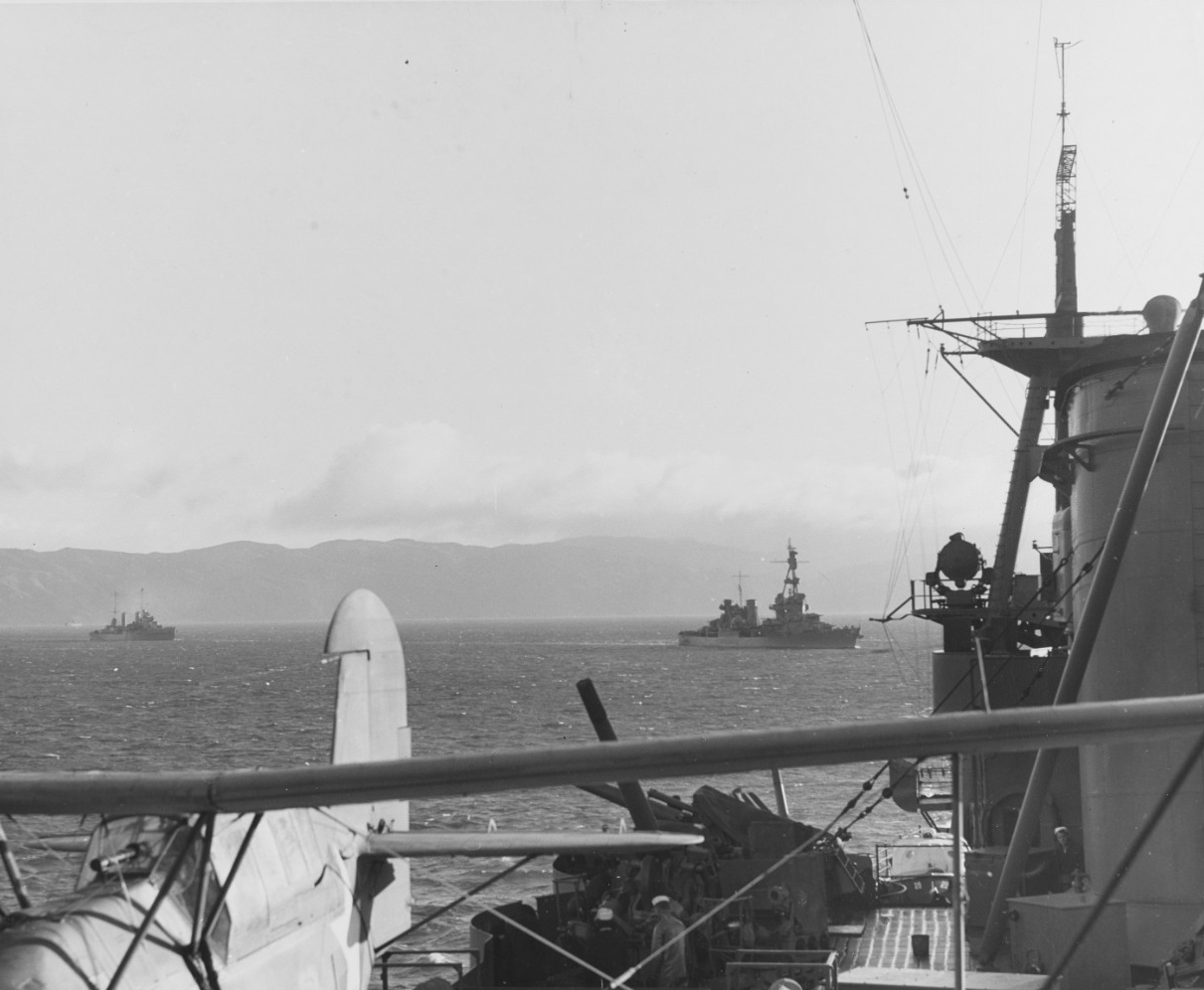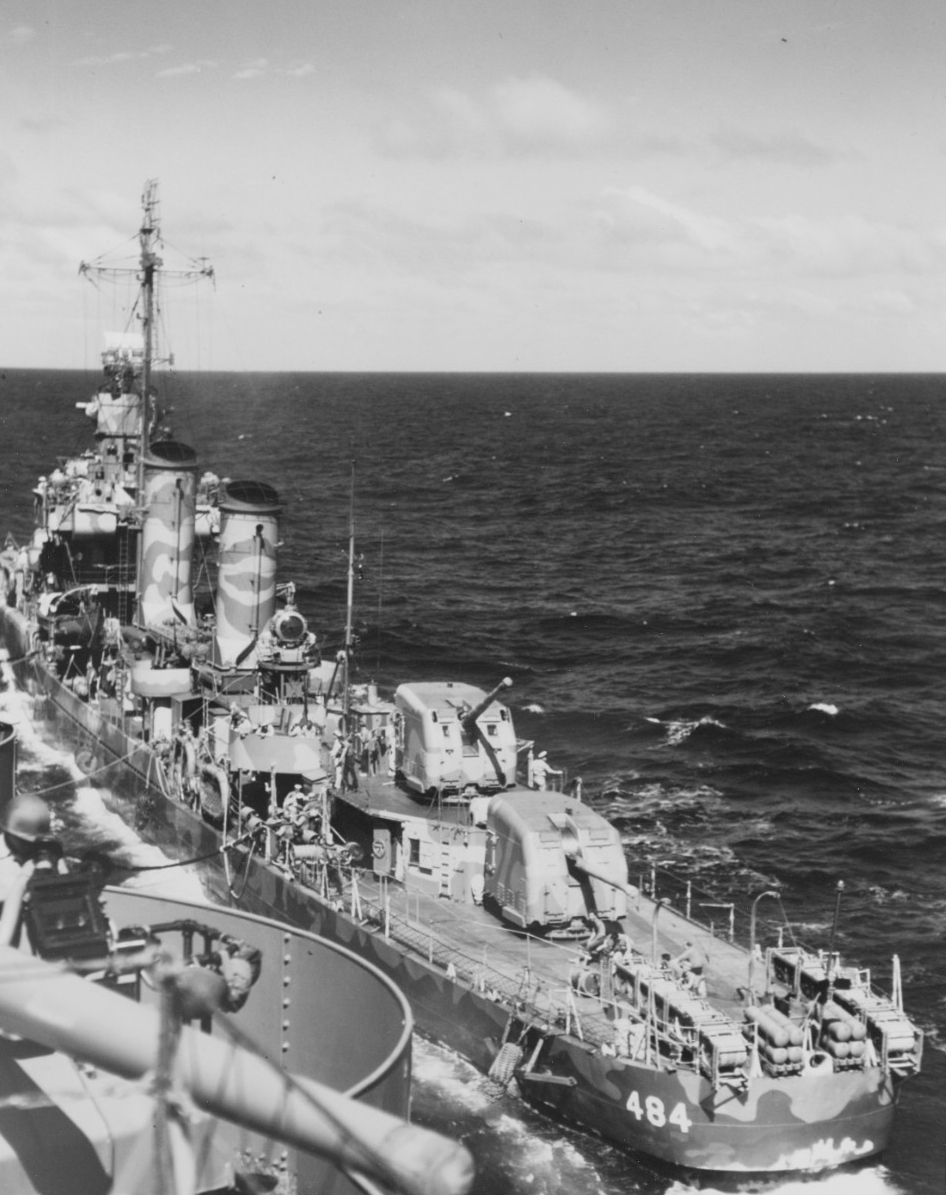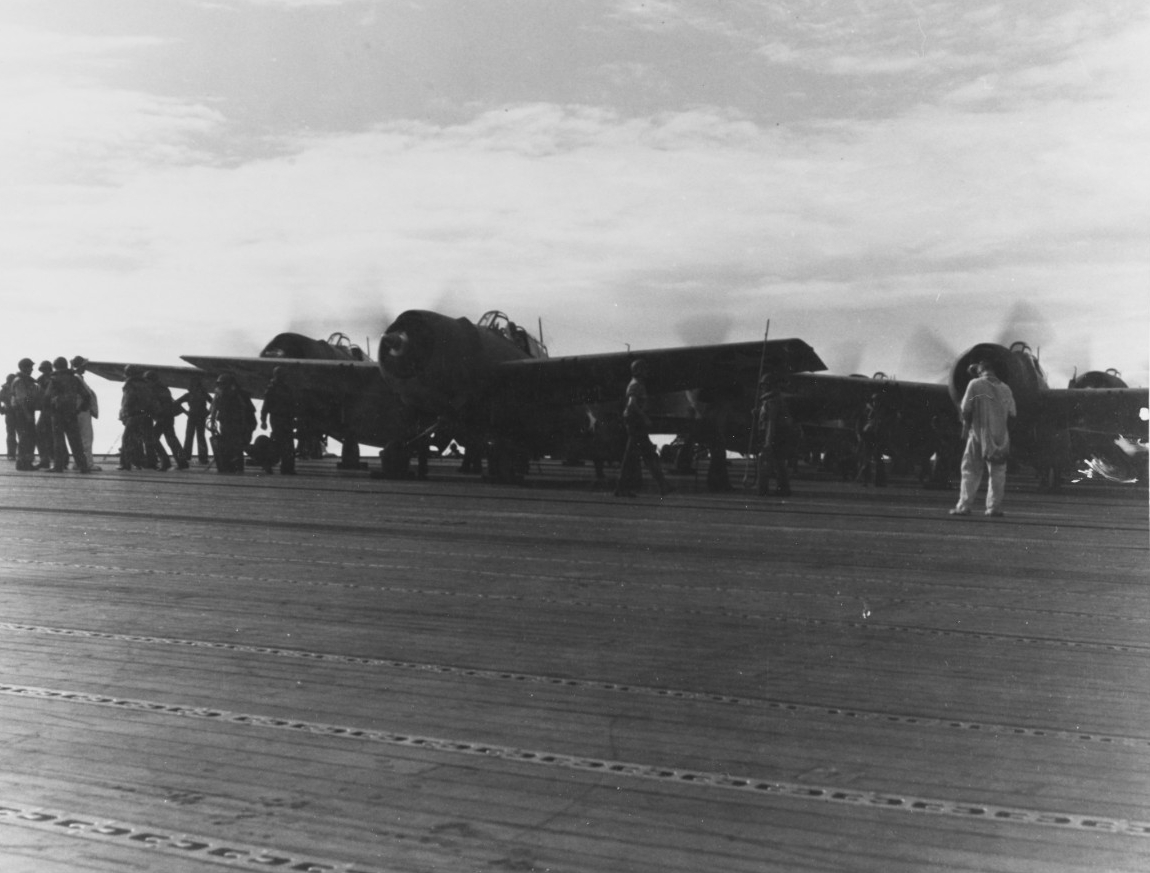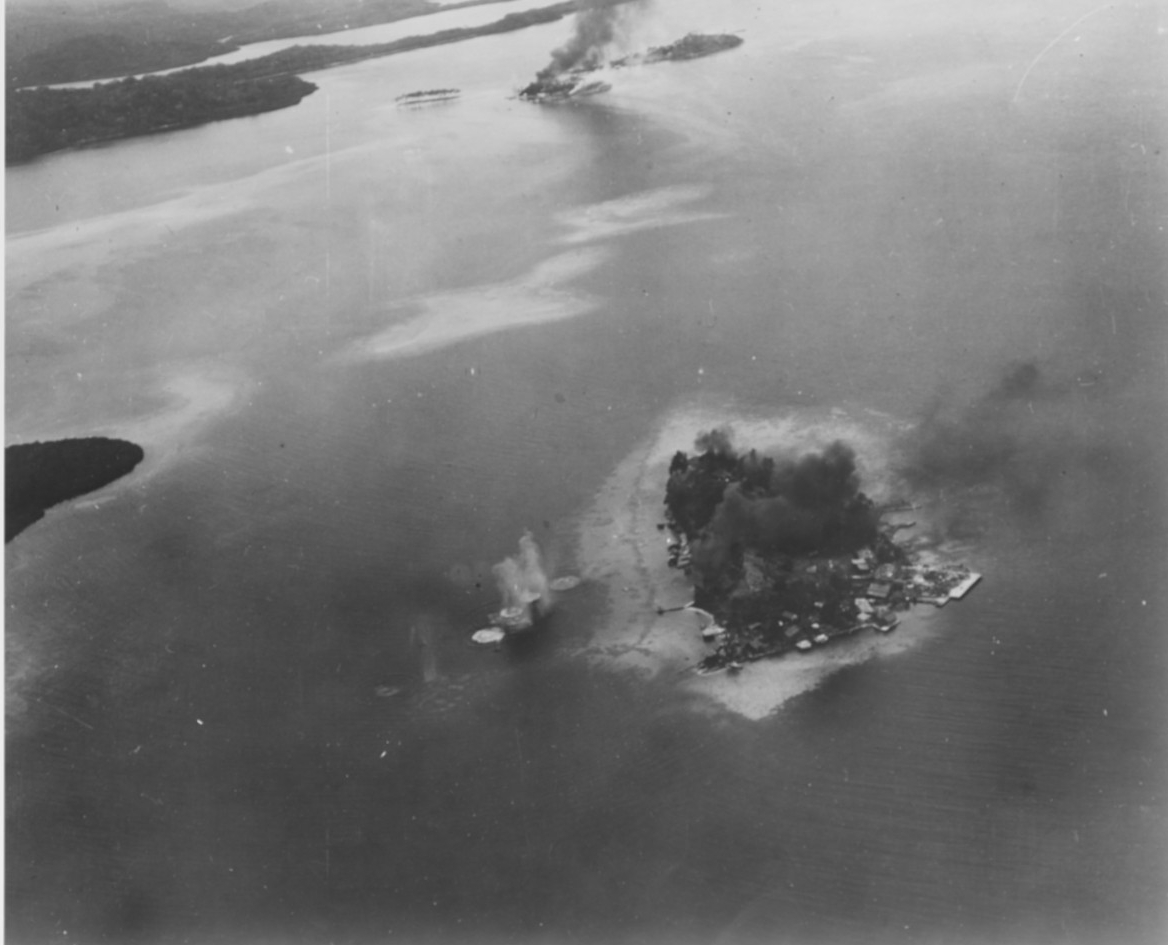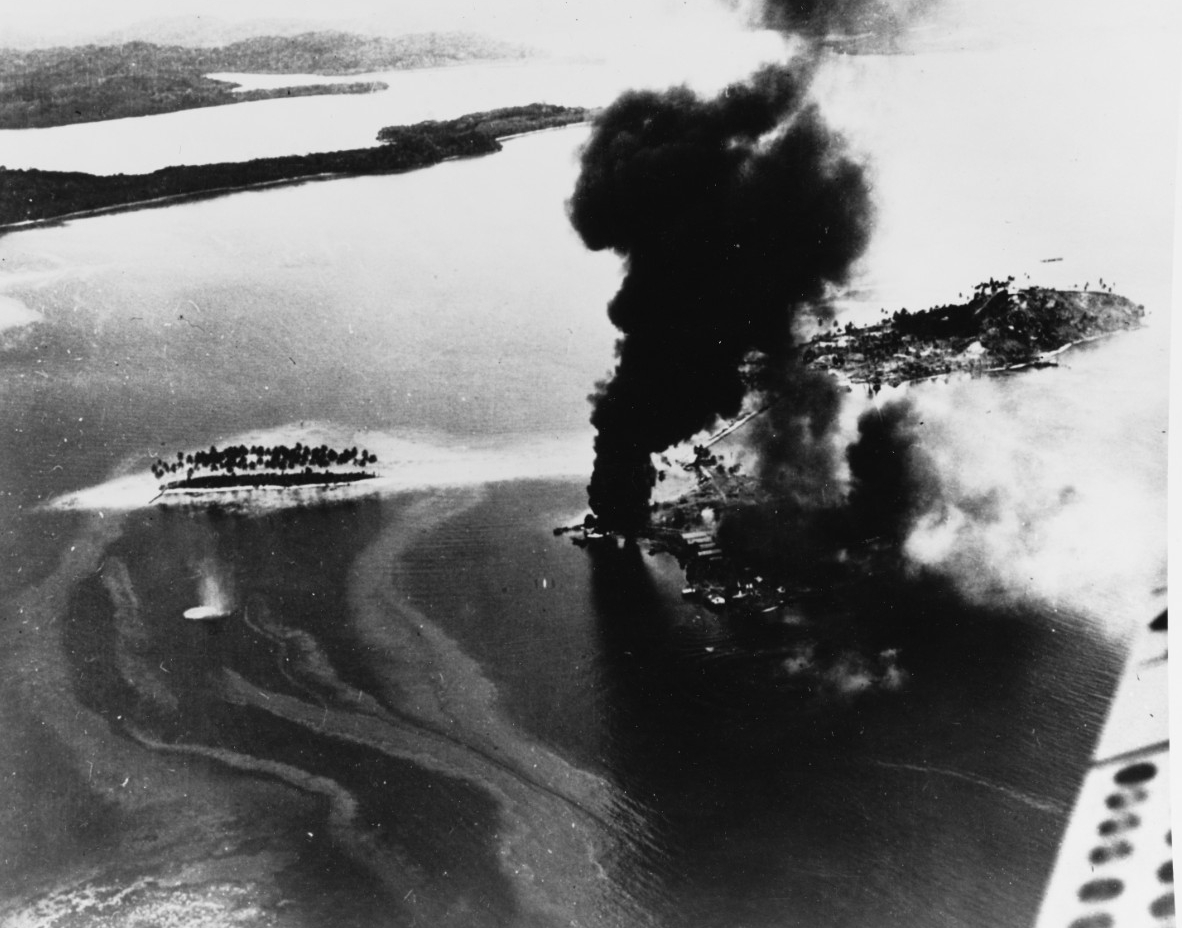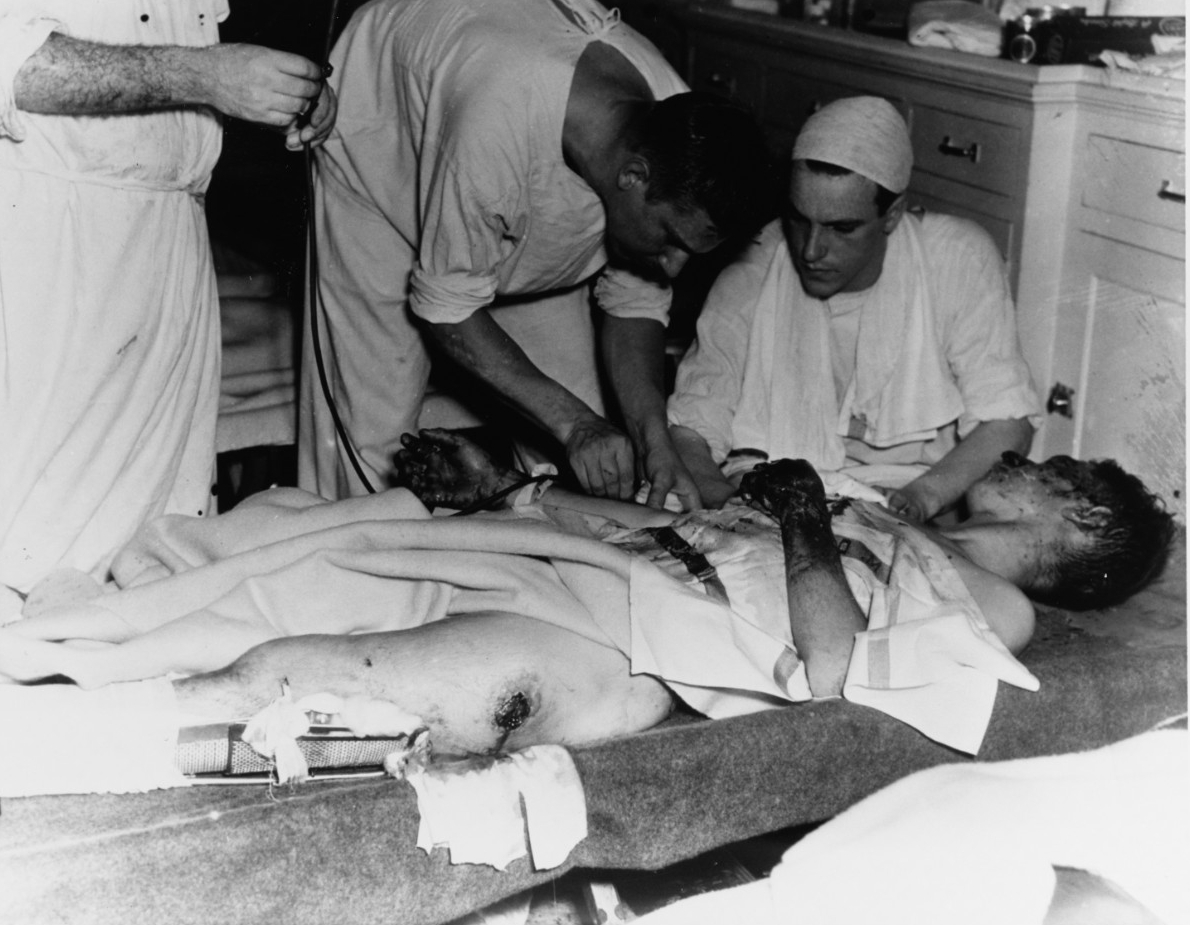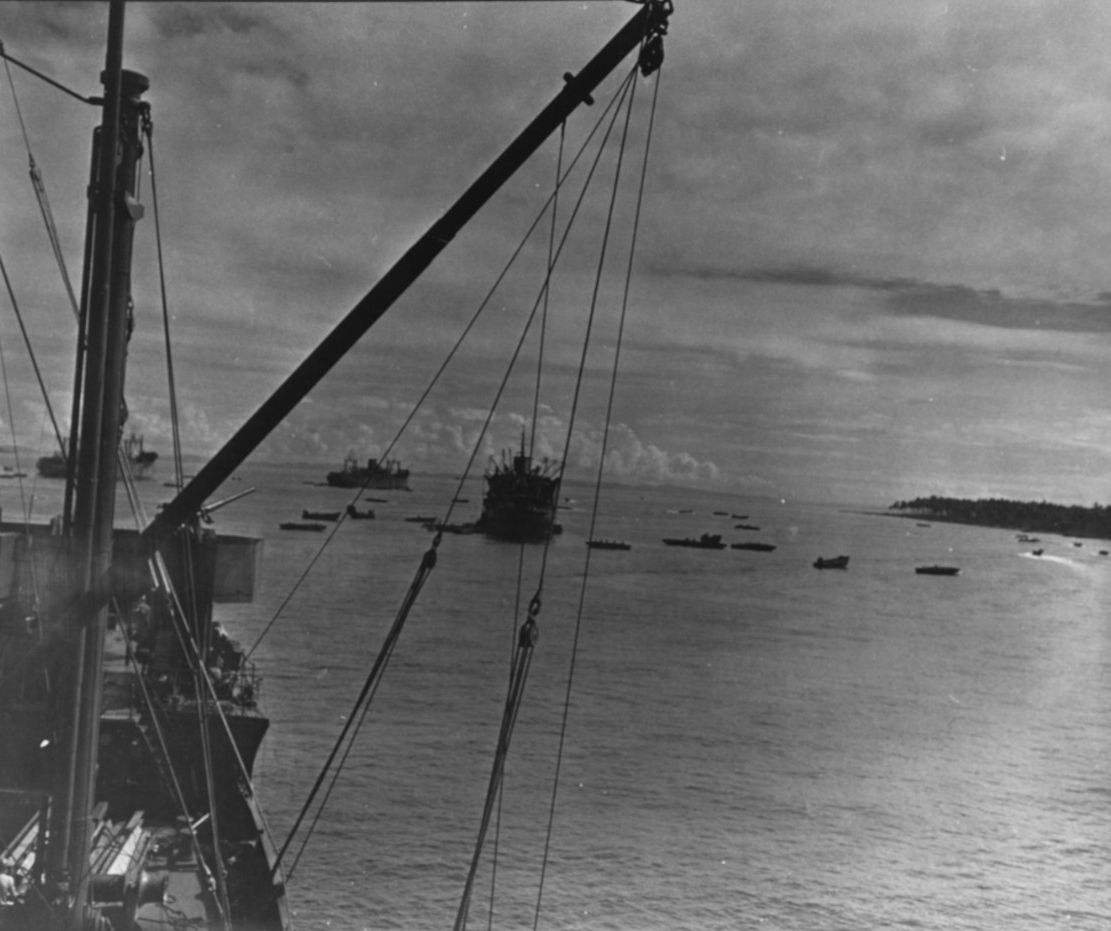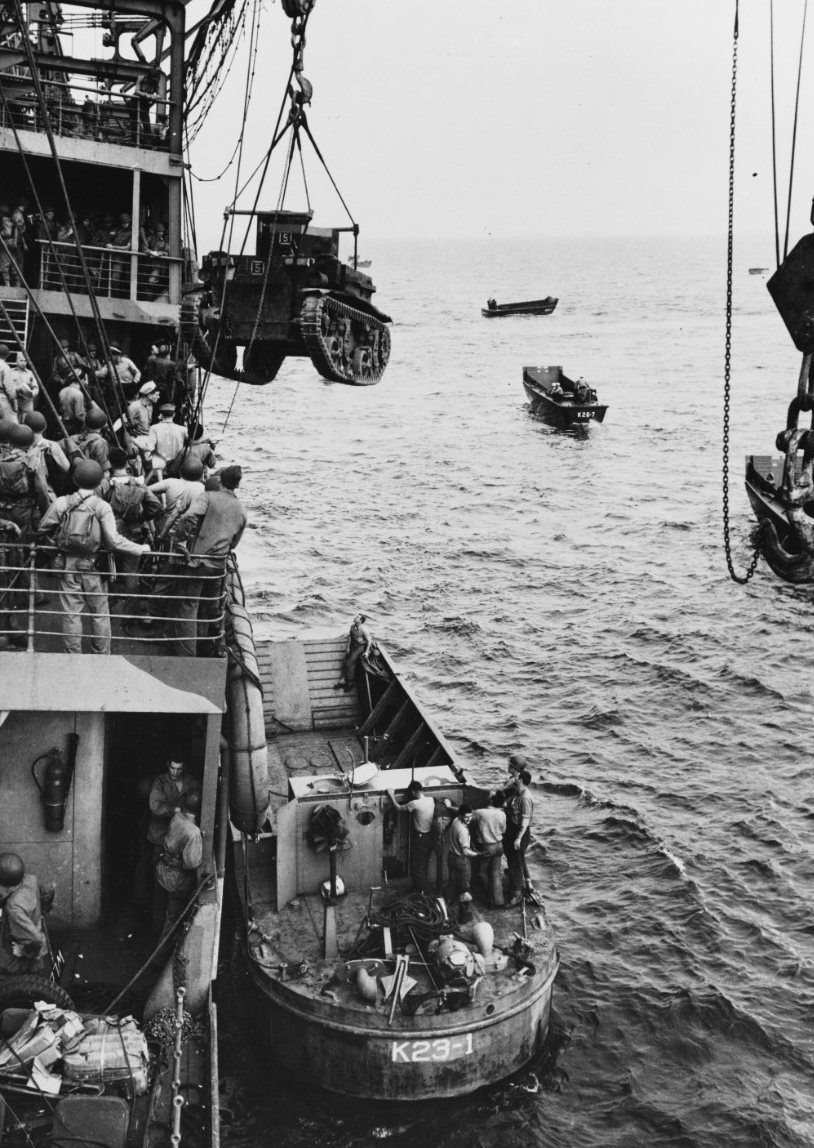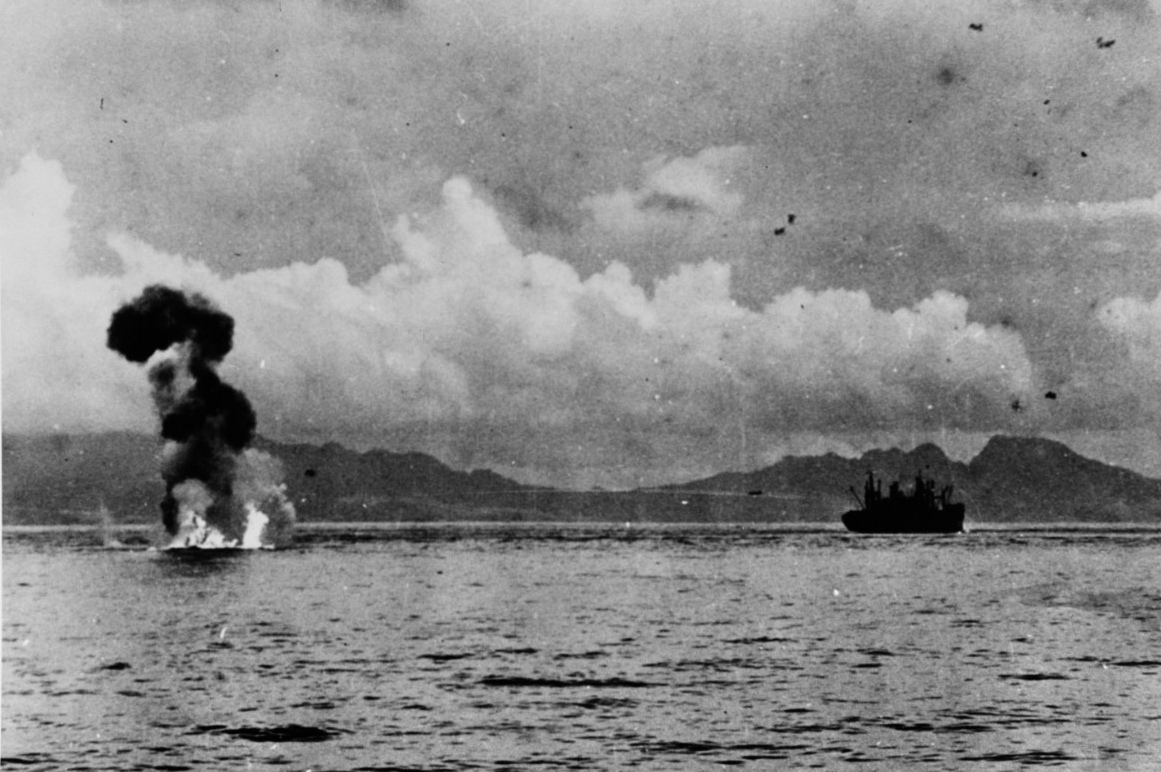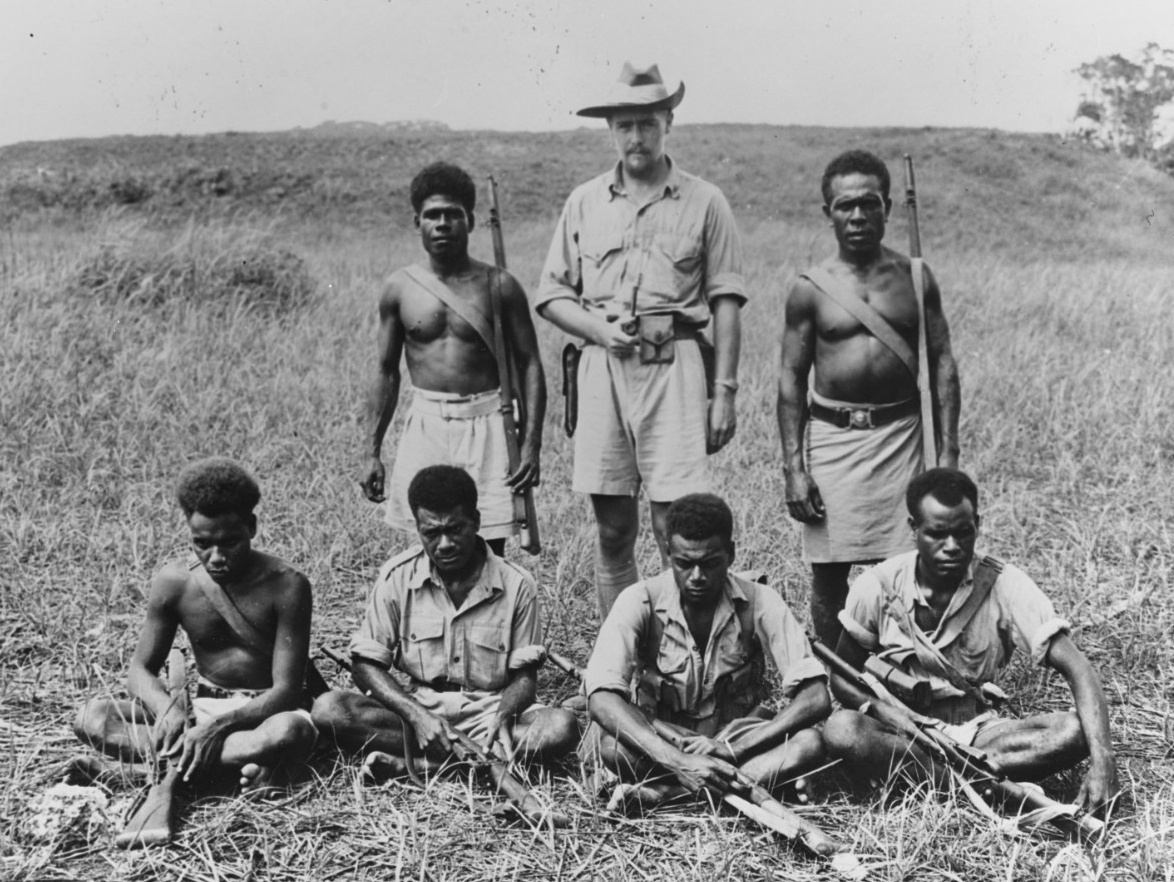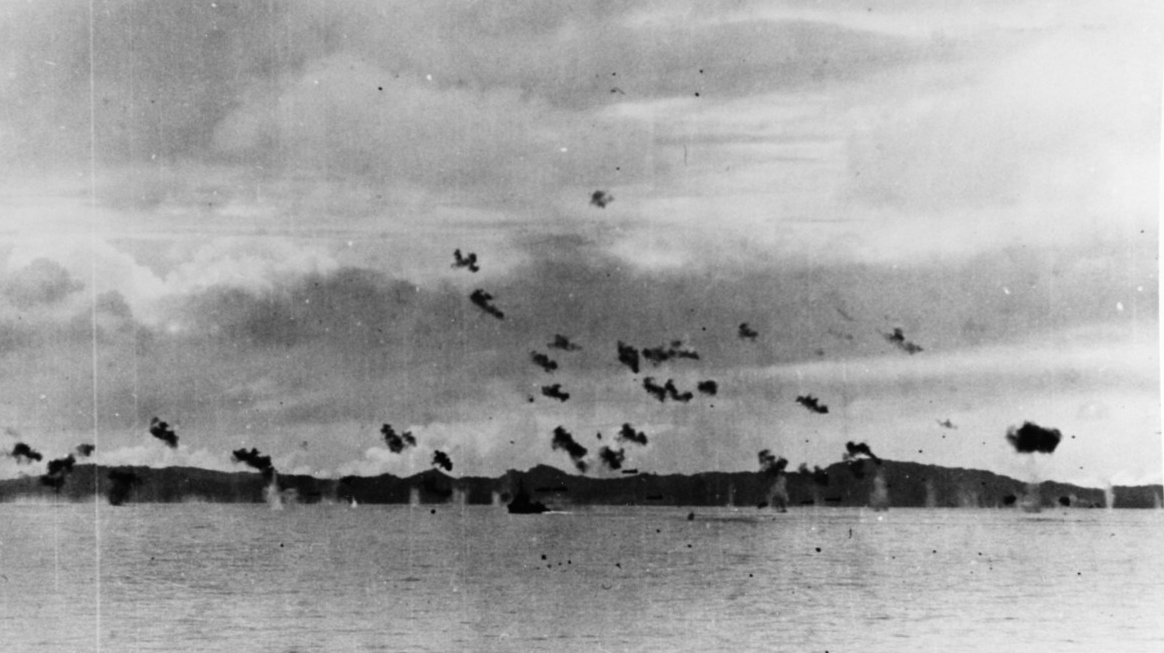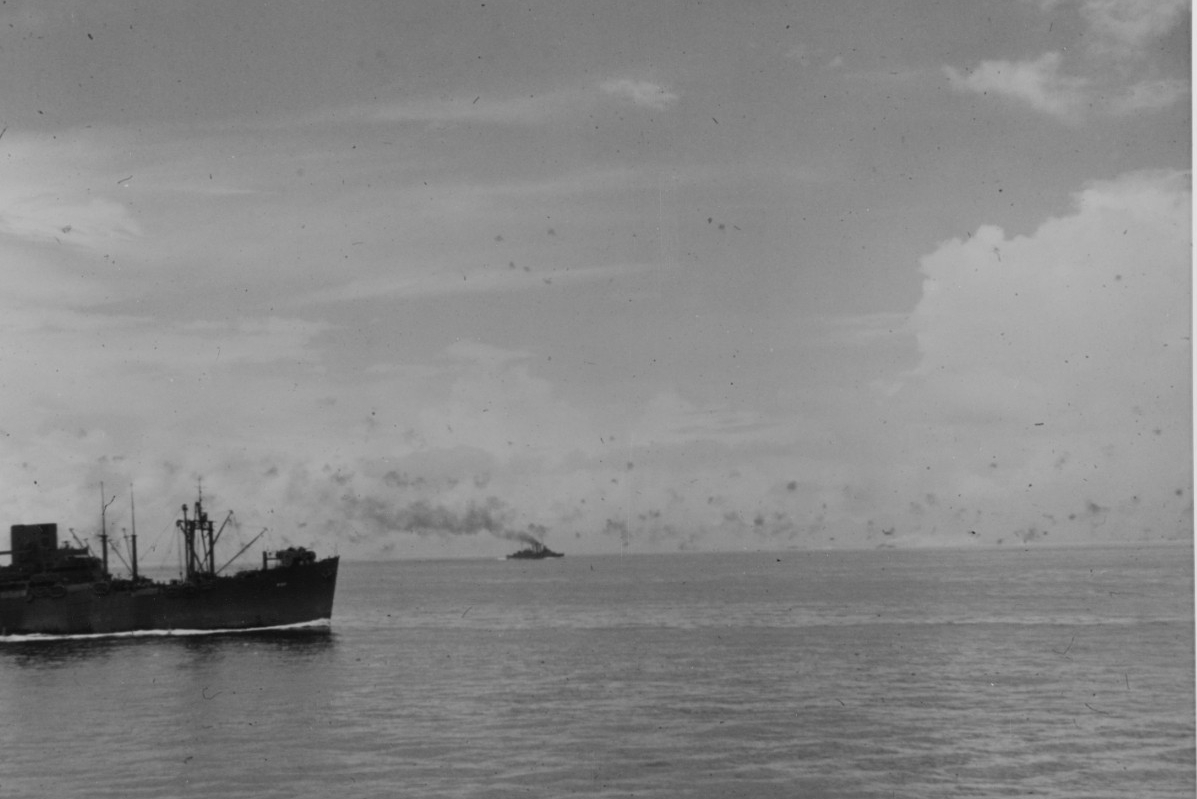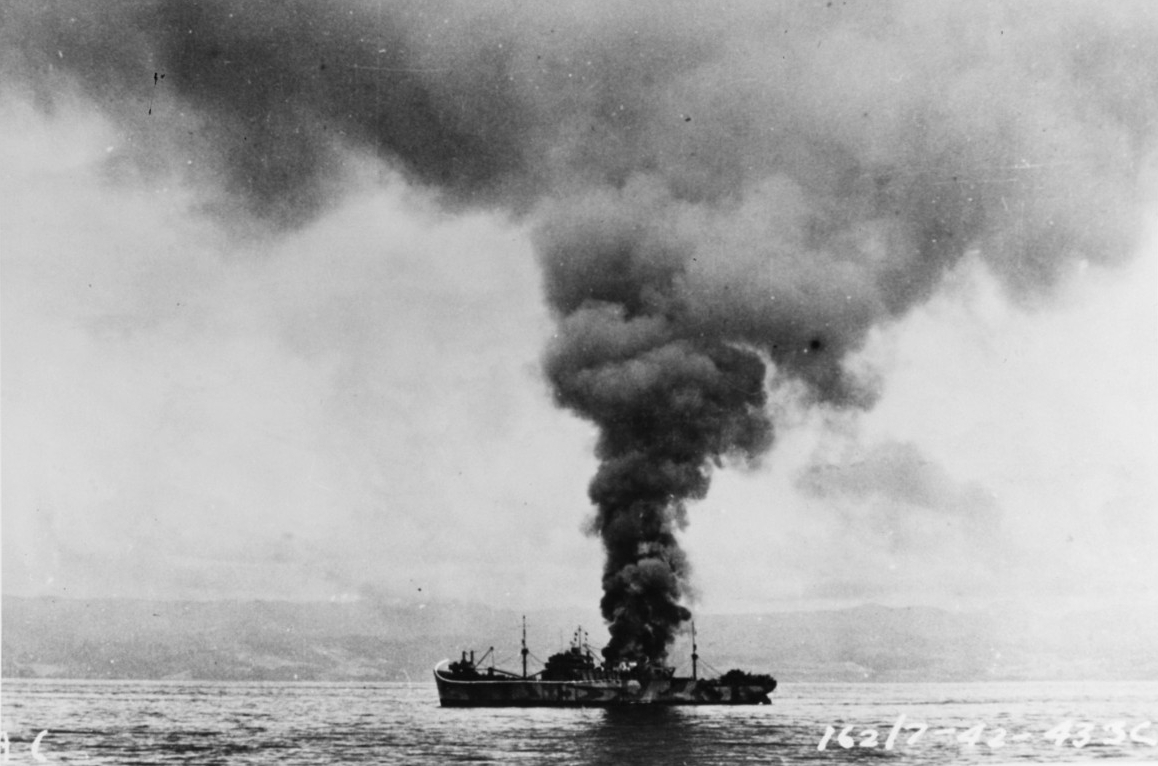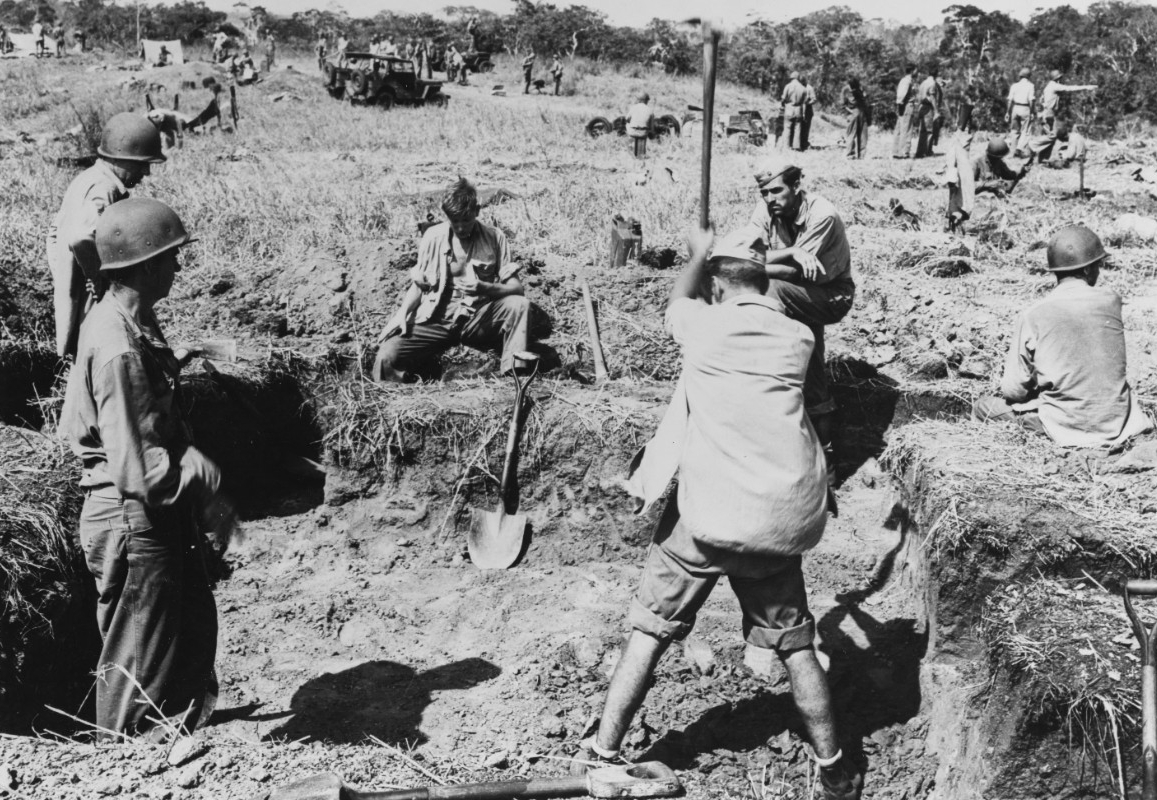Guadalcanal Imagery: Initial Operations, August–September 1942
Brigadier General William H. Rupertus, USMC, (center) on board Neville (AP-16) during the landings on Tulagi, 7–8 August 1942. Rupertus, assistant division commander of the 1st Marine Division, was in charge of combat operations on Tulagi and the other nearby Japanese-held islands. Note landing craft moving past in the background. The destroyer in the center distance is probably Buchanan (DD-484) (80-G-31372).
Marine Corps and Navy officers on Tulagi. Seated on the steps of the staff house are, left to right, front row: Lieutenant Colonel O. K. Pressley, Colonel M. A. Edson, Lieutenant Colonel H. E. Rosecrans, and Lieutenant Colonel R. E. Hill. Second row: Lieutenant E. B. McLarney, (MC) USN, Brigadier General W. H. Rupertus, Colonel R.C. Kilmartin, and Major William Enright. Third row: Captains Ralph Powell, Daryle Seeley, and Thomas Philpott. The photograph was probably taken soon after the Marines captured Tulagi in August 1942 (NH 97754).
Marines rest in the field on Guadalcanal, August 1942. Most of these Marines are armed with M1903 bolt-action rifles and carry long M1905 bayonets and USMC M1941 packs. Two men high on the hill at right wear mortar vests and one in center has a World War I–type grenade vest. The Marine seated at far right carries a Browning Automatic Rifle (80-G-20683).
Scene just after the Japanese torpedo plane attack on shipping between Guadalcanal and Tulagi, 8 August 1942. George F. Elliott (AP-13) is on fire in the left center after being hit by a crashing enemy aircraft. The other two smoke plumes mark the locations of planes that crashed into the water (NH 69114).
Ships leaving Wellington, New Zealand, on 22 July 1942, en route to take part in the invasion of Guadalcanal and Tulagi. Photographed from Chicago (CA-29), looking aft along the starboard side from the forward superstructure. Next ship astern is Salt Lake City (CA-26). She is followed by the Australian light cruiser Hobart. A Curtiss SOC Seagull floatplane is in the foreground (80-G-13455).
Buchanan (DD-484) refueling from Wasp (CV-7) while en route to the Guadalcanal-Tulagi invasion area, 3 August 1942. Buchanan is painted in Camouflage Measure 12 (Modified). Note the depth charges in stern racks and on K-guns, fenders rigged along her sides, and the red refueling flag flying from her foremast (80-G-K-423).
Japanese facilities burning on Tanambogo Island, east of Tulagi, on 7 August 1942, the invasion's first day. This view looks about east-south-east, with Gavutu Island to the right, connected to Tanambogo by a causeway. Photographed from an SBD aircraft based on one of the supporting U.S. aircraft carriers (80-G-11899).
Captain Warren Frederick Martin Clemens, British Solomon Islands Protectorate Defense Force (BSIPDF), with six members of the BSIPDF Scouts, on Guadalcanal, 1942. Clemens, the British Colonial Service District Officer on Guadalcanal, had remained on the island throughout its May–August 1942 occupation by the Japanese and carried out important intelligence-collection and reconnaissance operations (80-G-17080).
Published: Fri May 10 12:09:36 EDT 2019

